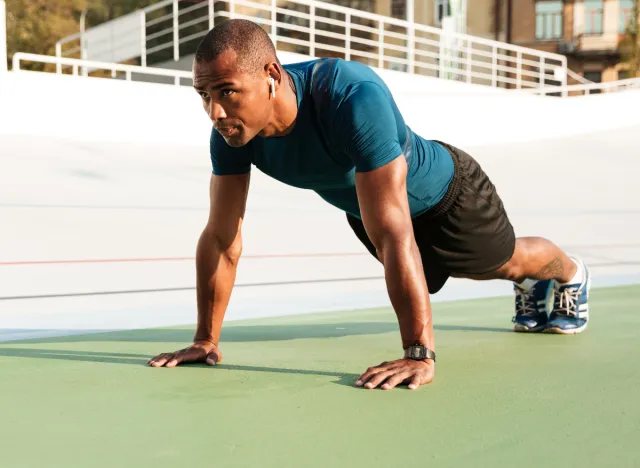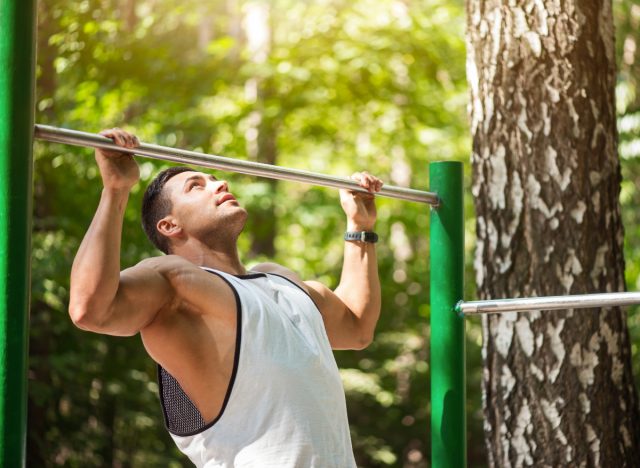Calisthenics, aka using your body weight to create resistance, can be both exciting and daunting, especially for newcomers. If it seems somewhat intimidating to you, don’t fret; there are plenty of accessible ways to kickstart this form of training, including embracing the basics and setting realistic goals. In this article, we’ll explore how to start calisthenics training, focusing on what calisthenics are, covering a few of the optimal benefits they provide, and giving a simple yet effective strategy for building strength, flexibility, and confidence while minimizing barriers to entry.
Whether you’re new to fitness or seeking a fresh challenge, this introduction provides the knowledge and motivation needed to take those initial steps toward mastering bodyweight exercises and unlocking your full potential.
Table of Contents
What are calisthenics?


At its core, calisthenics training revolves around utilizing your body weight as resistance. This makes it a highly accessible, adaptable form of exercise for individuals of all fitness levels. From basic movements like squats and pushups to more advanced exercises like pull-ups and handstands, calisthenics offers diverse exercises tailored to your specific goals and abilities.
Calisthenics gained popularity for their accessibility and minimal equipment requirements. They’re potent for developing strength, lean muscle mass, flexibility, and mobility.
By embracing a gradual and progressive approach and a mindset focused on consistency and perseverance, you’ll soon discover that calisthenics training can be rewarding and empowering, setting the foundation for a lifelong journey of fitness and self-improvement.
How to start calisthenics training:


If you’re wondering how to start calisthenics training, we have you covered. It may initially seem intimidating, but several approaches exist to ease into it:
- Begin with the basics, such as squats, pushups, and planks, focusing on mastering proper form before progressing.
- Set realistic goals based on your current fitness level, starting with achievable milestones and gradually increasing intensity over time.
- Utilize progression techniques like incline pushups or assistance bands for pull-ups to gradually increase difficulty.
- Prioritize consistency in your workouts, aiming for regular, shorter sessions rather than sporadic intense workouts.
- Listen to your body and avoid pushing yourself too hard, paying attention to any signs of discomfort or pain.
Remember that progress takes time, so stay patient and celebrate small victories. You’ll gradually build strength and proficiency in calisthenics with consistent effort and dedication.
The benefits of calisthenics workouts:


There are many benefits when plugging calisthenic movements into your workout routine.
1. Functional fitness
Calisthenic workouts are particularly effective because they prioritize movements that closely replicate real-life activities, enhancing functional fitness in various aspects. These exercises improve muscle strength, balance, and coordination and directly translate into better performance in daily tasks like lifting groceries or climbing stairs.
For instance, pushups and pull-ups are staples in calisthenic routines, frequently used to test muscle endurance and upper-body strength relative to one’s body weight. Pushups engage the chest, shoulders, and triceps, while pull-ups target the back, biceps, and forearms. By consistently performing these exercises, individuals develop the strength and endurance necessary for daily tasks requiring pushing, pulling, and lifting movements.
This functional approach to fitness not only enhances physical capabilities but also promotes a sense of confidence and independence in tackling everyday challenges with ease and efficiency.
2. No need for equipment
One of the most appealing aspects of calisthenics is the minimal equipment requirement. By using just your body weight, you can perform effective workouts virtually anywhere, whether in your living room, a park, or while traveling. This accessibility removes barriers to exercise, making it easier to stay consistent with your fitness routine. Conversely, exercises like pull-ups require minimal equipment.
3. Improved flexibility and mobility
Calisthenic exercises effectively enhance flexibility and mobility by engaging muscles and joints across their entire range of motion. Exercises such as squats, lunges, pushups, and pull-ups strengthen muscles and elongate muscle tissue, promoting improved flexibility.
This increased flexibility enhances mobility, allowing smoother movement transitions and greater comfort during daily activities. By reducing the risk of injury during workouts and promoting overall mobility, calisthenics contribute to a more functional and active lifestyle.
4. Full-body workouts
Calisthenic routines engage multiple muscle groups simultaneously, with most movements being compound exercises, providing a comprehensive full-body workout. Movements like pushups, pull-ups, squats, and dips work various muscles, including the chest, back, arms, legs, and core, resulting in balanced strength development and efficient enhancement of calorie burning.
This functional approach to fitness ensures that no muscle group gets neglected, promoting overall functional strength, lean muscle mass development, and muscular endurance.
The versatility of calisthenic workouts is remarkable. They’re able to suit different fitness goals and preferences. Whether you’re aiming for traditional strength or hypertrophy routines with sets and reps, prefer the intensity of HIIT workouts and cardio intervals, or even need active recovery sessions on rest days, calisthenics can accommodate it all.










